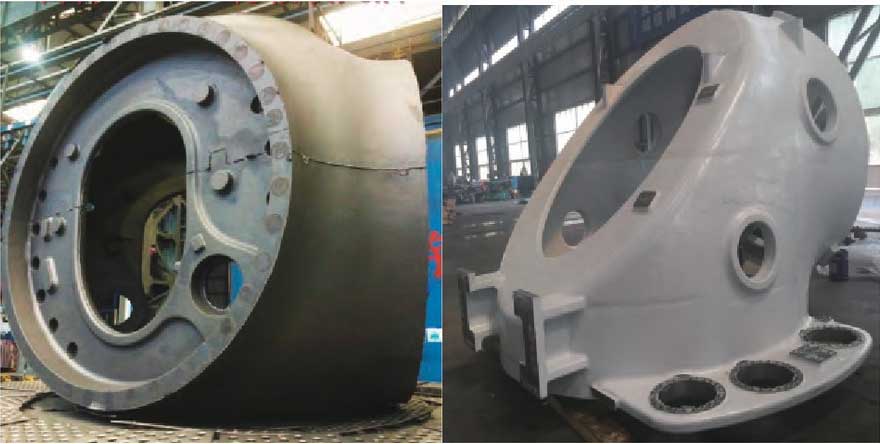The prediction of shrinkage porosity and shrinkage cavity defects of nodular iron castings has been lack of reliable and effective criteria because of the great difference between its solidification characteristics and steel castings. The primary crystallization process of nodular iron castings from liquid to solid includes two stages: crystallization of primary graphite or primary austenite and eutectic solidification. The results show that the shrinkage defects of nodular iron castings are determined by many factors, such as liquid phase shrinkage, graphitization expansion, shrinkage of Austenite Formation, expansion of mold cavity caused by graphitization expansion force and so on.
Model assumptions:
- The liquid alloy solidifies under good metallurgical conditions and there is no carbide (< 3%) in the matrix.
- In the solidification process of liquid alloy, the unit volume remains unchanged, and the density can change with solidification.
- Only when the solid fraction of the alloy in the cell is less than the critical solid fraction FSC, the liquid in the cell can flow and feed.
- The liquid alloy flows under gravity and the expansion force of graphite, regardless of the thermal convection during the process.
- Under the action of graphite expansion force, the mold wall can move.
- The total volume of shrinkage cavity in nodular iron castings is determined by the volume changes caused by the liquid shrinkage of alloy, the expansion of primary graphite or the contraction of primary austenite, the expansion of eutectic graphite, the contraction of eutectic austenite and the movement of mold wall.

